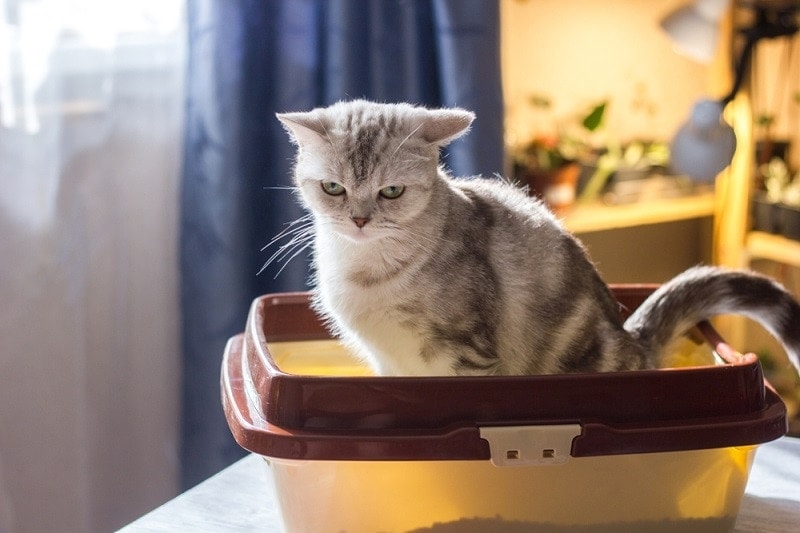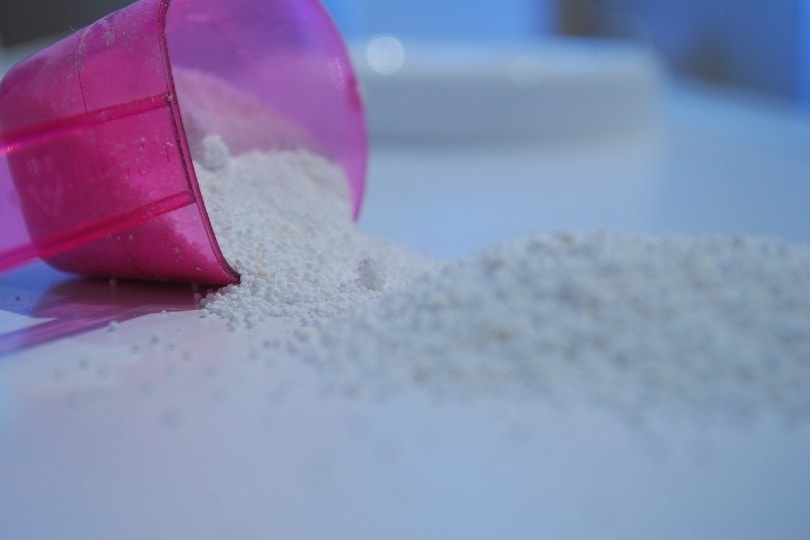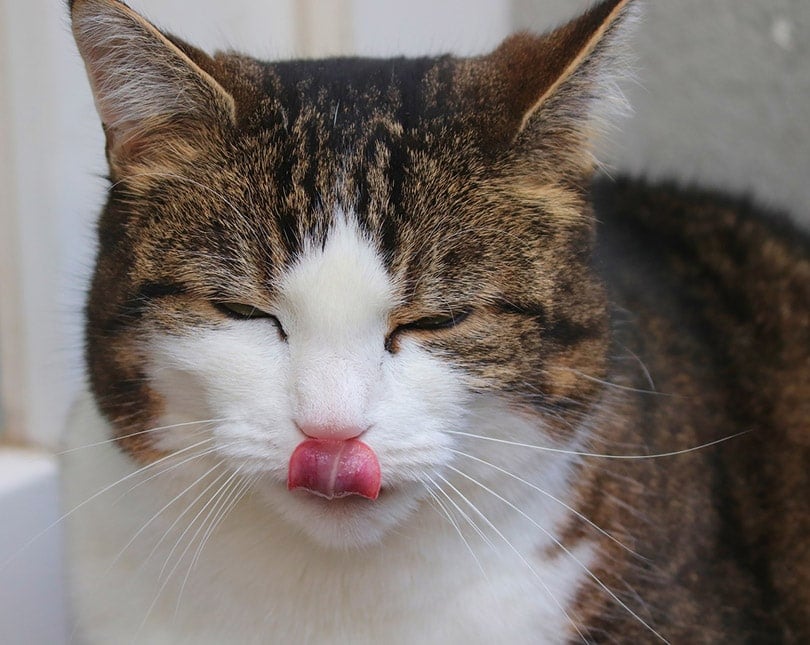Why Does My Cat Try to Bury, Scratch, Cover, or Paw Their Food? 4 Possible Reasons

Updated on
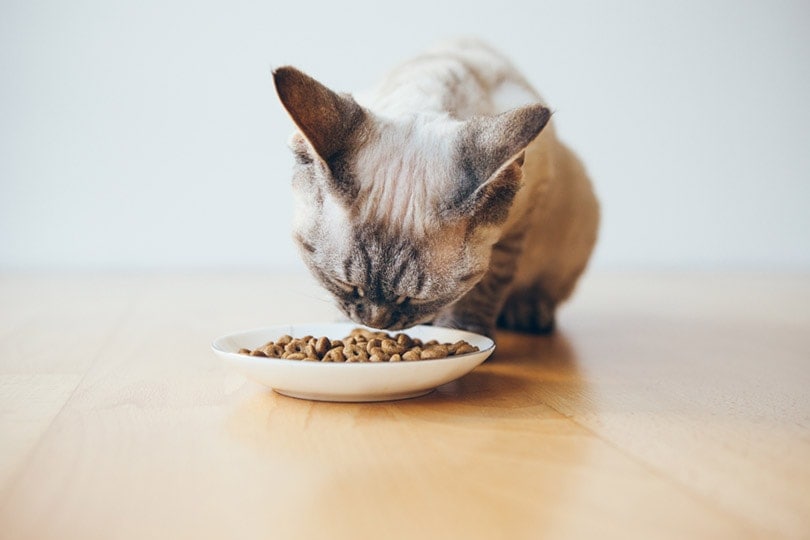
If you have an indoor cat, you’re probably used to the sound of scratching and pawing around the litterbox. But what you may not expect to see is if your cat exhibits this behavior around their food. A cat scratching around their food bowl indicates they are trying to cover it up. It may seem silly seeing them paw incessantly on the flooring when it clearly is not moving any dirt, and their bowl remains blatantly uncovered. Sometimes this cute behavior can become a problem, particularly if they are using their claws.
The burying behavior may cause scratches on your precious flooring, or they may splay their leftovers across the kitchen, making a mess. Either way, the key to managing this behavior is knowing the reasons behind it!
 Why Does My Cat Try To Cover Its Food?
Why Does My Cat Try To Cover Its Food?
1. Covering Its Tracks
When we think of wild cats, we usually imagine large predators at the top of the food chain. Surely, they don’t have to worry about being hunted? While this may be true, there are smaller species of wild cats that are prey for other, larger species. These species will have to be careful they don’t attract too much attention to themselves. After a meal, they can leave a lot of scents in the area that will alert predators that they have been there. So, covering up their food will mean they also cover their scent. This behavior may occur more in cats, either pregnant or currently nursing kittens. As in the wild, cats who would usually roam their territories will have limited movement due to their immobile young. Covering up their scent is vital for them to protect their young.
Additionally, even cats that are apex predators (animals at the top of the food chain) may still cover their tracks, regardless of the threat of predation. More submissive cats will cover their scent so that other aggressive and more dominant cats in the area cannot track them down.
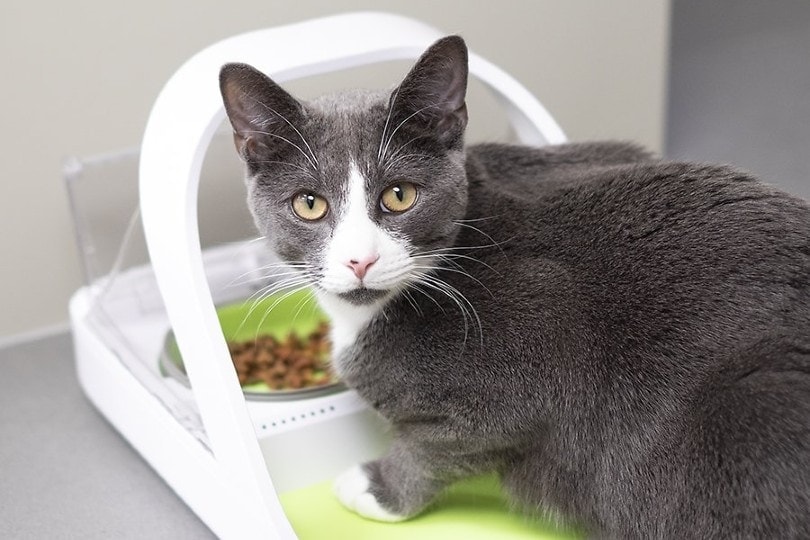
Many species of wild cats live alone. Even the ones that live together, like lions, like to be somewhat solitary. This anti-social behavior means they aren’t very good sharers! For your cat at home, they may see other pets in the household as competition for the hard-earned food that they hunted (by meowing at their humans until kibble rained downwards!) Once they are finished eating, they may want to cover the food so that other pets don’t come to eat it.
You may notice this behavior appear if there are new additions to the household and your cat is not that thrilled about it. This behavior may also be submissive to other pets in the home. A more dominant cat would simply become aggressive to others around their food bowls. Submissive cats will just hide the food so that it doesn’t get eaten by others.
3. They’re Neat Freaks
Any cat owner will know that cats can be high maintenance. If they’re not sleeping, they’re probably cleaning! This cleaning is usually self-grooming, but they also like a clean environment. The drive to cover old food comes from the same instinct to cover their poop in the litter box. The place where your cat eats and spends its time is essentially its “territory” or its “den”. Keeping this space clean is a survival instinct. The presence of old food in their living area will attract other animals, diseases, and mold.
It’s in a cat’s best interest to keep their space clean as not to run the risk of becoming sick. Covering their food will keep it away from:
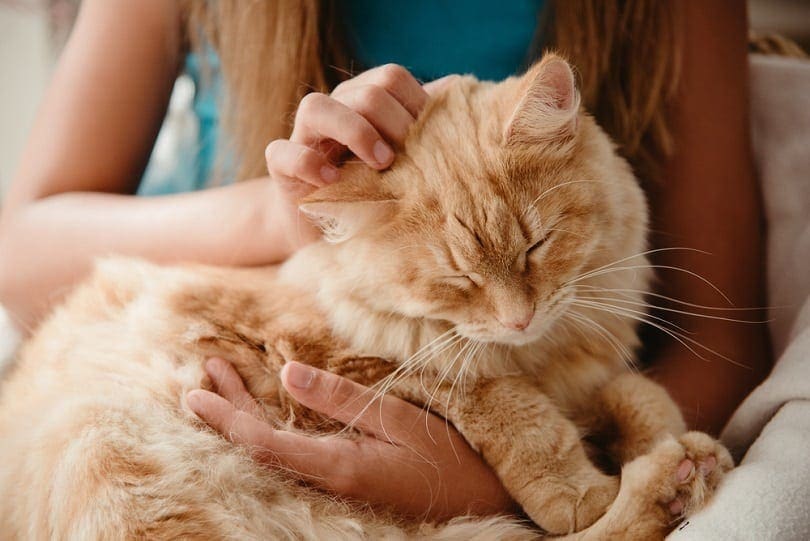
4. They’re Saving It for Later
The answer may not be due to all the above instincts; it simply may be because you have to feed them too much food in one sitting! If they eat as much as they want, and there are still leftovers, they may cover up the food to find later. This behavior is called “food caching,” which is more prevalent in dogs (burying a bone) but can also be displayed in cats. If they want to come back to the food, they want to make sure it is still there. Burying the food will make sure no one else comes and eats it before they can return.
For their wild diet—meat from other animals—burying it can also help to preserve the food. Meat left uncovered in the hot sun can become rancid and inedible. Burying the food will extend its life by naturally keeping it cool underground.
How To Stop Your Cat From Burying Its Food
This behavior you are seeing from your cat is perfectly normal. You mustn’t attempt to punish them for this behavior. Punishing natural behaviors will do little to curb the behavior. Instead, they may develop real behavioral issues. If the burying behavior is something you wish to stop, perhaps to protect your flooring from scratches, then how you manage their feeding is key.
 Wrapping Up
Wrapping Up
Your cat attempting to scratch, paw, and bury their food is 100% normal behavior. If anything, it shows your cat is in tune with its natural instincts. But in some situations, this behavior can be caused by social tension between other cats in the home. Using our tips, you can manage this behavior in the home by fixing the root cause, stopping the behavior physically, or learning to live with it.
Featured Image Credit: Veera, Shutterstock
 Why Does My Cat Try To Cover Its Food?
Why Does My Cat Try To Cover Its Food?
